2018年上半年全国大学英语四六级考试于6月16日进行,新浪教育24小时全程关注,为你带来第一手四六级考试资讯。以下为英语六级选词填空源文:
Five Fascinating Details About the Media Mogul Who May Have Written “Mary Had a Little Lamb”
Everywhere that Sarah Josepha Hale went, success was sure to go
By Erin Blakemore
smithsonian.com
May 24, 2016
Did Sarah Josepha Hale write “Mary’s Lamb,” the eternal nursery rhyme about a girl named Mary with a stubborn lamb companion? The jury is still out—but it’s clear that the woman reputed for writing it was one of America’s most fascinating characters。 In honor of the poem’s publication on May 24, 1830, here’s more about the supposed author’s life:
She was one of America’s most powerful media moguls。。。
Forget Oprah—in the 19th century, there was one queen of media, and her name was Sarah Josepha Hale。 She first plunged into national prominence as one of the nation’s first published women novelists and poets。 Her book Northwood: Or, Life North and South advocated that slaves be relocated to Liberia rather than continue to toil in the U.S。 It attracted the attention of a Boston reverend who invited the recently widowed Hale to edit the Ladies’ Magazine, a new magazine aimed at fashionable women。
In 1837, Hale’s magazine was acquired by Louis Godey, who also owned the popular Lady’s Book, and Godey’s Lady’s Book, the new publication that emerged, quickly became America’s most influential magazine。 At its height, the magazine had over 150,000 subscribers, was widely read by men and women, and featured some of the nation’s best literary talent, like Edgar Allan Poe and Harriet Beecher Stowe。
Known as much for its fashion plates and dress patterns as its uplifting poetry and edifying articles, the magazine was in print for another 70 years。 Hale herself was at its helm for 40—enough time to become the most influential arbiter of fashion, culture and American female taste of her time。 She used her influence not just to tell women what to wear, but how to think。
…but Hale didn’t think women should vote。
Was Hale a feminist? The term is so laden with modern meaning that it’s hard to apply to a powerful woman like Hale。 But though Hale supported everything from women’s education to employment, she though that women’s powers were intended to be used subtly。 Not only did she oppose women’s suffrage, but she thought that women were better off wielding what she called a “secret, silent influence” on men instead of entering politics on their own。
The magazine juggernaut that Hale helmed impressed similar values on women, emphasizing the importance of a separate sphere in which women could reign over domestic issues and affect the behaviors of others through their own deportment。 But though Hale’s magazine reinforced gender stereotypes, historians have argued that the “separate sphere” it upheld was actually a place where women could experience what little power and autonomy was available to them during the 19th century。
She fought a fierce battle to make Thanksgiving a national holiday
Hale wasn’t just a writer: She was also a fierce social advocate。 Born in New Hampshire, she was particularly obsessed with an idealized idea of New England, which she associated with abundant Thanksgiving meals that she claimed had “a deep moral influence。” Using the platform provided by Godey’s Lady’s Book, she began a national campaign to have a national holiday declared that would bring families together while celebrating the glorious festivals of yore。 No matter that the first Thanksgiving was celebrated by a privileged few in a time of rampant starvation and the suppression of Native Americans—Hale wanted her Thanksgiving。 And in 1863, after 17 years of advocacy including letters to five presidents, Hale got it。 President Abraham Lincoln, embroiled in the Civil War, issued a proclamation setting aside the last Thursday in November for the holiday。
She once preserved a Boston monument with an epic craft fair
Though Hale’s legacy today revolves around putting turkey and mashed potatoes on tables everywhere, her interests extended to other New England icons。 In 1840, Hale organized the mother of all craft fairs at Boston’s Quincy Market。 The seven-day fair raised a whopping $30,000 to finish the building of an ornate obelisk to commemorate the Battle of Bunker Hill。 That’s the equivalent of fundraising nearly $800,000 today。
Her nursery rhyme was inspired by actual events
The true authorship of “Mary’s Little Lamb” is disputed。 According to the New England Historical Society, Hale wrote only part of the poem, but claimed authorship。 The poem was included in Hale’s book Poems for our Children, which she intended “to inculcate moral truths and virtuous sentiments” to families and children。
Regardless of the author, it seems that the poem was inspired by a real event。 When young Mary Sawyer was followed to school by a lamb in 1816, it caused a commotion。 A bystander named John Roulstone wrote a doggerel about the events。 The verse was so popular that eventually Mary sold the lamb’s wool for a higher price based on its fame。 It earned $60, which was used to help rebuild Boston’s Old South Church。 At some point, Hale herself seems to have co-opted the verse—though, if a 1916 piece by her great-niece is to be trusted, Hale called fraud, claiming that “some other people pretended that some one else wrote [the poem]” for the rest of her life。
来源:新东方




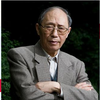 独家|刘道玉揭秘恢复高考内幕
独家|刘道玉揭秘恢复高考内幕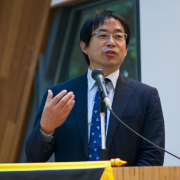 日本农村如何做到“再穷不能穷教育”?
日本农村如何做到“再穷不能穷教育”? 高考,我不爱你,但谢谢你
高考,我不爱你,但谢谢你 好未来与新东方同时调整意欲何为
好未来与新东方同时调整意欲何为 天津工业大学长腿校花笑容甜
天津工业大学长腿校花笑容甜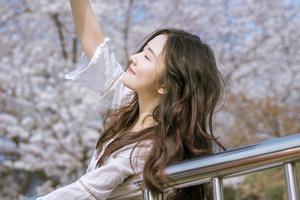 贵州大学校花森系写真惹人爱
贵州大学校花森系写真惹人爱 北电进修班美女阳光拂面显妖娆
北电进修班美女阳光拂面显妖娆 暨南00后校花晒洛丽塔风写真
暨南00后校花晒洛丽塔风写真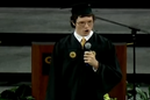 美国大学激情迎新演讲
美国大学激情迎新演讲 十分钟趣味世界历史
十分钟趣味世界历史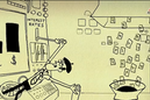 60秒动画读懂经济学
60秒动画读懂经济学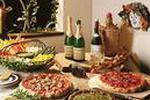 意大利美食烹饪入门
意大利美食烹饪入门 2018高考特别报道
2018高考特别报道 新浪2018国际学校择校巡展
新浪2018国际学校择校巡展 新浪2017“中国教育盛典”
新浪2017“中国教育盛典” 2017全国特别报道:40年,新高考
2017全国特别报道:40年,新高考 蒂姆-库克杜克大学毕业典礼演讲
蒂姆-库克杜克大学毕业典礼演讲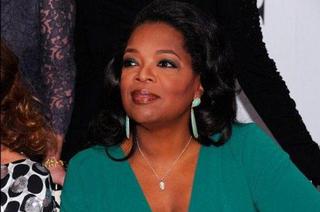 奥普拉南加州大学毕业典礼演讲
奥普拉南加州大学毕业典礼演讲 马云教师情结:青年讲课视频首曝光
马云教师情结:青年讲课视频首曝光 联合国环境署亲善大使王俊凯谈环保
联合国环境署亲善大使王俊凯谈环保 2018国家公务员考试报考指南
2018国家公务员考试报考指南 2018年考研报名
2018年考研报名 直击2017年6月大学英语四六级
直击2017年6月大学英语四六级 2017全国高考特别报道
2017全国高考特别报道